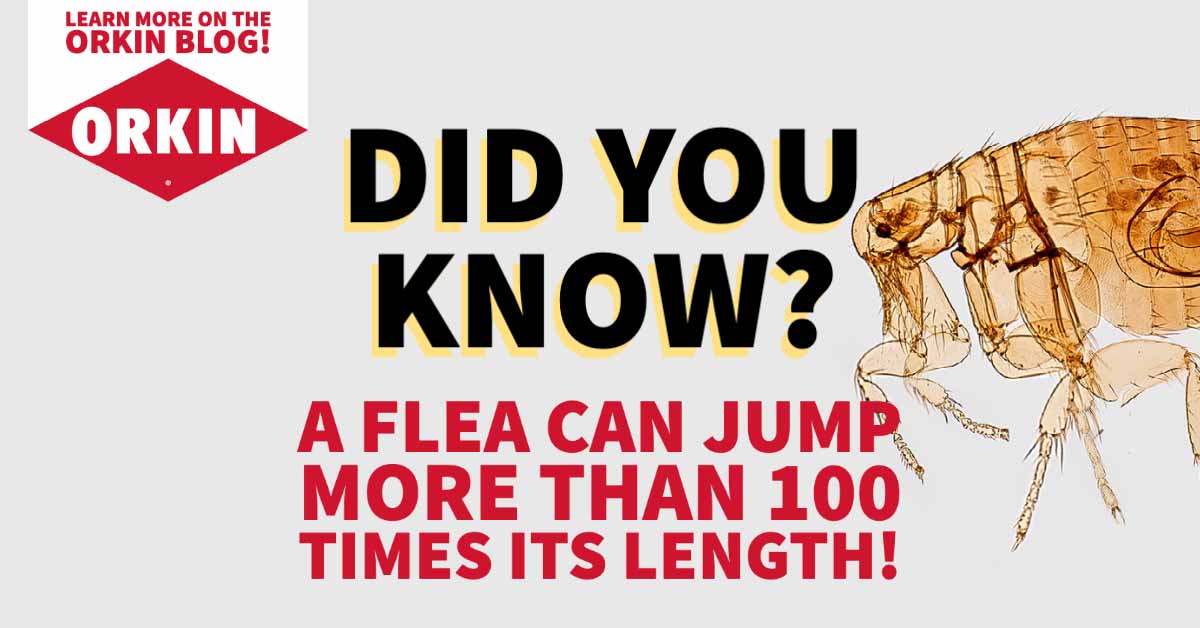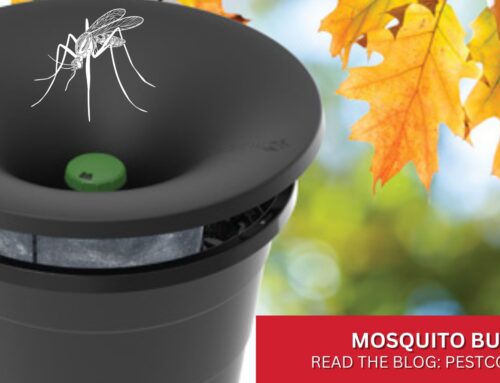Summer is coming to a close, which means chillier weather and an abundance of fleas. Fleas thrive in cooler weather and are at their most active between 70 – 75 degrees. It only takes one flea to hop on the back of one of your furry friends and invade your home, throwing your life into upheaval. So, what steps can you take to prevent an overwhelming flea infestation, and what do you do if you see a flea? Orkin has the answers to all these questions and more!
Why do Fleas Prefer Fall?
Fall is the perfect time of year for the humble flea to comfortably complete its life cycle, which is why fleas are so difficult to eliminate once they have taken control of your home. On a normal day, a female flea can lay anywhere between 30-50 eggs. Multiply that by the hundreds of female fleas hiding in your bedding, your carpet, and your pets, and you are easily outnumbered. Before you know it, you could be facing hundreds of thousands of these irritating, blood-sucking pests!
What is the Life Cycle of a Flea?
Fleas are simple creatures, which makes their life cycle easy to track. Each stage of the life cycle of a flea is also a symptom of infestation. Once you know the life cycle of a flea, you also know which signs to look for that indicate a possible infestation.
- Egg.Female fleas can lay up to 50 eggs a day. These eggs are tiny, oval, smooth, and white. They are nearly imperceptible but still visible to the naked eye.
- Larva. In 2-10 days, the eggs hatch into little flea larvae. These larvae are skittish around sunlight and hide in dark nooks in crannies, making them incredibly difficult to find.
- Pupae. Between 1-3 weeks, the flea larvae develop a light brown, tiny cocoon that blends into the environment.
- Adult. In as little as a week, your whole home can be swarmed by full-grown fleas. Fleas are tiny, reddish-brown insects that feed off of the blood of animals as well as humans.
How Do You Know You Have Fleas?
If you have fleas, you will likely become aware almost immediately. Unfortunately, they will alert you in the most obnoxious, itchy way imaginable. Fleas are, after all, not subtle creatures. The three biggest ways fleas announce their new residence in your home is through Biting, Flea-ces (feces), and Swarming.
- Biting. Signs of flea bites can appear on both humans and animals. On humans, flea bites appear as clusters of red dots. These bites are a little more difficult to find on animals because of all of the fur. You will, however, see your pets licking, scratching, and excessively biting their fur, indicating they may be itching with fleas.
- Flea-ces (Droppings). Also known as “flea dirt,” these small black specks are actually flea droppings. They sometimes even have a reddish coloring because of the digested blood. Fleas also leave behind small, white eggs. You will typically find these in carpeted areas. If you have made it to the point where you are finding eggs, your flea infestation requires the services of a professional.
- Swarming. If you have a fairly serious infestation, you will likely see physical fleas hopping onto your drapery, carpet, or furniture.
Does Heat Kill Fleas?
The short answer is yes, but this can be misleading because you cannot simply turn up your thermostat and roast the fleas out of your house. If you are targeting specific areas, you can absolutely put your laundry in the dryer, steam your furniture, or even rent bed bug heaters.
However, if your home is already infested, none of these options will eliminate every single flea, and it is likely that they will return sooner rather than later.
Call Orkin to Schedule Your Next Flea Control Appointment!
Orkin professionals know how frustrating it can be to watch your home descend into chaos against an impermeable tide of fleas. That’s why Orkin has options for homeowners to defend their homes against fleas and other invasive pests!







